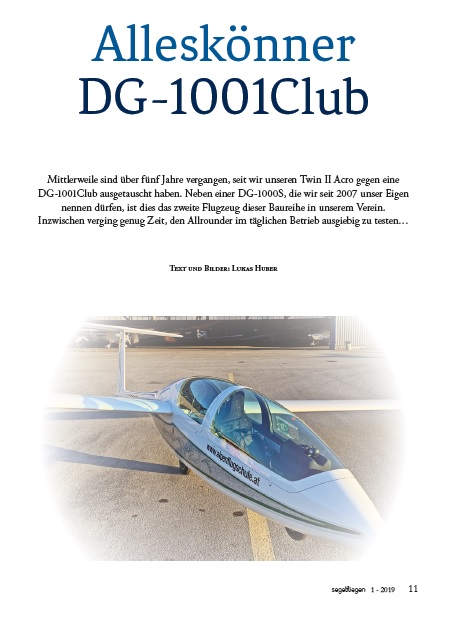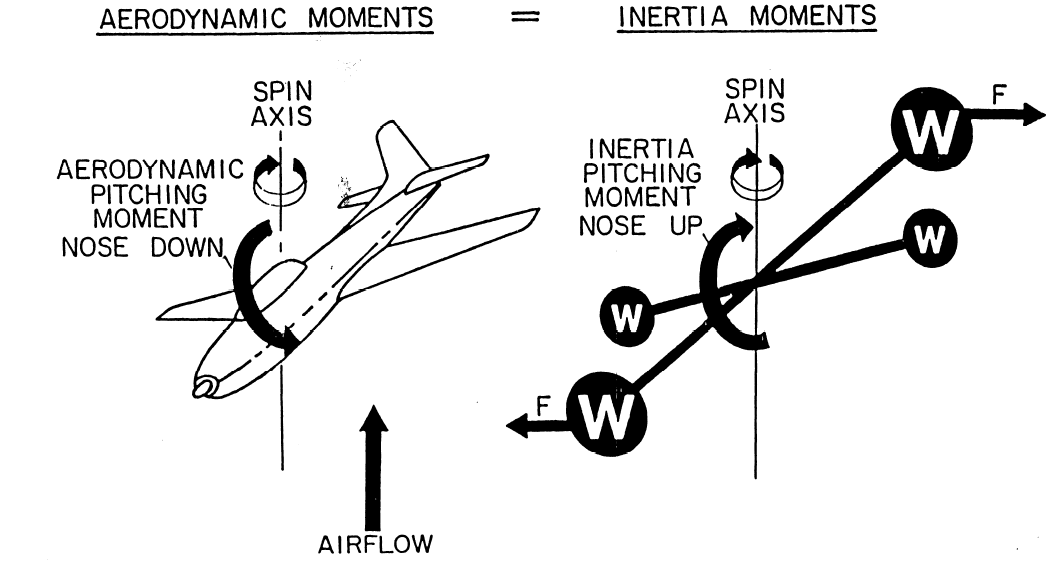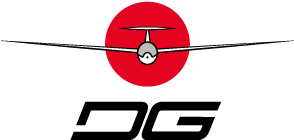The German „Segelfliegen Magazin“ 1/2019 contained a nice article on the DG‘1001Club. Although the article is available in German only, we’re sure that it might help some pilots from abroad for their decision. With google translator at least the essence of the text should be understandable. We’d like to thank Segelfliegen Magazine very much for letting us publish the article.
The following statement was translated by Alex Husy (Australia):
 The DG’1991Club version tested in the article was manufactured in 2013, in the meantime several improvements and modifications were embodied and DG likes to make a comment to some items in the article.
The DG’1991Club version tested in the article was manufactured in 2013, in the meantime several improvements and modifications were embodied and DG likes to make a comment to some items in the article.
- In 2016 the cockpit received an update and the fabric cover over the aft rudder pedals as described in the article was replaced by a fiberglass one. Thus, in the front seat the elbows have now a firm support without touching the co-pilot’s feet.
- The DG-1001’s trim box allows for flexible adjustment of the CG, according to the crew. This is true for either normal or XC flight, as also for aerobatics. Thereby the weights may remain in the box for all manoeuvres. In order to simplify handling of the weights DG developed in 2017 a new table, which is delivered as standard with all new aircraft ex-factory. In due future, TM1000-41 will be published which contains a modified version of the table that will result in even more simplification. If the actual weighing report is supplied, DG can also establish a table for older airplanes. If the use of the table is too complicated for you or if you decide to fly without CG optimization feel free to do so at any time. You may use the trim box, but it is not a must!
- Vibration of the airbrake covers was observed on some early serial numbers when the brake was only cracked open. In 2017 this was corrected by TM1000-33 which increased friction and this was introduced as serial standard. Older airplanes can be retrofitted if required.
- Also in 2017 a new nose wheel was introduced. The one actually installed is a 3” Tost aluminium wheel and allows a notably smaller fairing under the fuselage, improving aerodynamics and noise level in the cockpit.
 The DG-1000 has a spinning characteristic identical to most of the modern FRP gliders, making it ideal for training and conversion to modern single-seaters. Due to the larger mass of the components and smaller surfaces as compared to older training aircraft, as e.g. the ASK-13, almost all the modern glider have a tendency to “porpoise”, i.e. to change between steeper and flatter spin phases. Imagine two crossed dumbbells in rotation, like these, the glider also has a tendency to return to the horizontal when the rotation speed increases. After a short time the rotation speed will decrease and the airplane resumes a steep spin attitude, i.e. the nose will dip noticeably below the horizon. This spin behaviour can be observed in all modern sailplanes. The DG-1000 is therefore one of the few planes in which you can demonstrate the spin behaviour of modern gliders.
The DG-1000 has a spinning characteristic identical to most of the modern FRP gliders, making it ideal for training and conversion to modern single-seaters. Due to the larger mass of the components and smaller surfaces as compared to older training aircraft, as e.g. the ASK-13, almost all the modern glider have a tendency to “porpoise”, i.e. to change between steeper and flatter spin phases. Imagine two crossed dumbbells in rotation, like these, the glider also has a tendency to return to the horizontal when the rotation speed increases. After a short time the rotation speed will decrease and the airplane resumes a steep spin attitude, i.e. the nose will dip noticeably below the horizon. This spin behaviour can be observed in all modern sailplanes. The DG-1000 is therefore one of the few planes in which you can demonstrate the spin behaviour of modern gliders.
- In order to improve the characteristics for basic training new 18m winglets for the DG^1001 were developed. While not only having an attractive design, they also improve stability around all axes, reduce the stall speed and therefore represent a welcome bonus for basic training. New end plates were developed for the 17.2m variant to improve the roll rate in aerobatics. Both wingspan options may be fitted to all DG-1000 and DG-1001 (except M), configuration change only takes in a few minutes.
- For aerobatics DG offers a 5-point harness in new production DG-1001 aircraft. While the glider is authorized with 4-point harnesses for all figures described in the manual, this may be improve pilot’s comfort for certain flight attitudes.
- .TM 1000-41 raises the maximum cockpit load to 2x110kg
